Grounding Plate
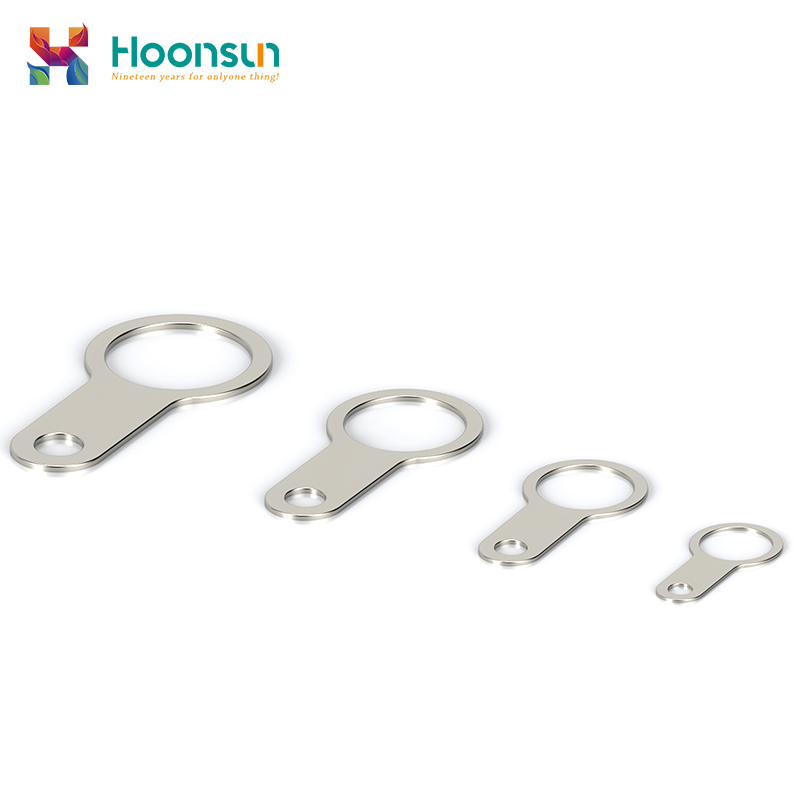

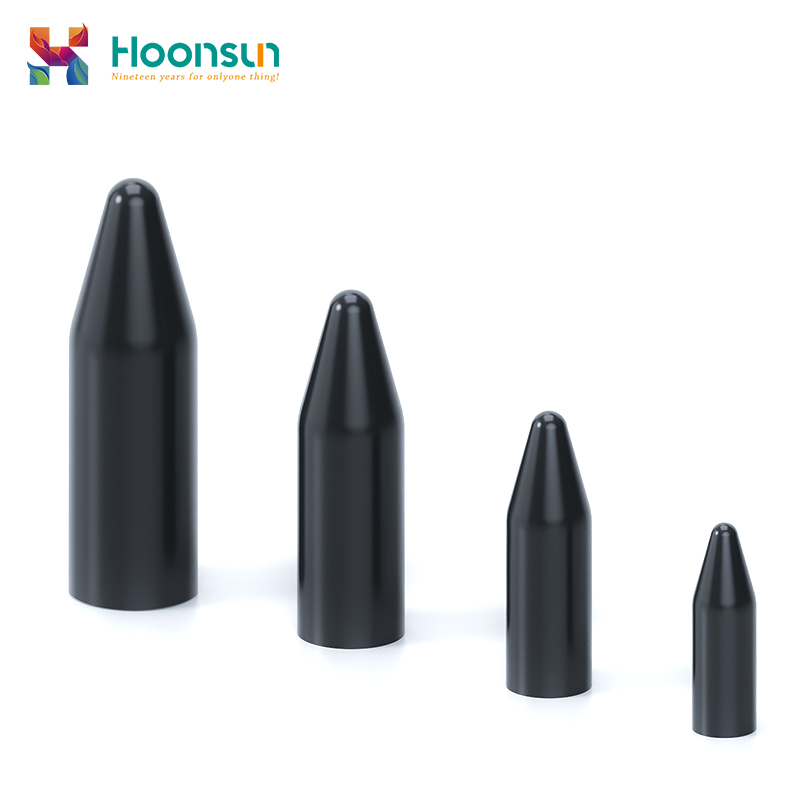
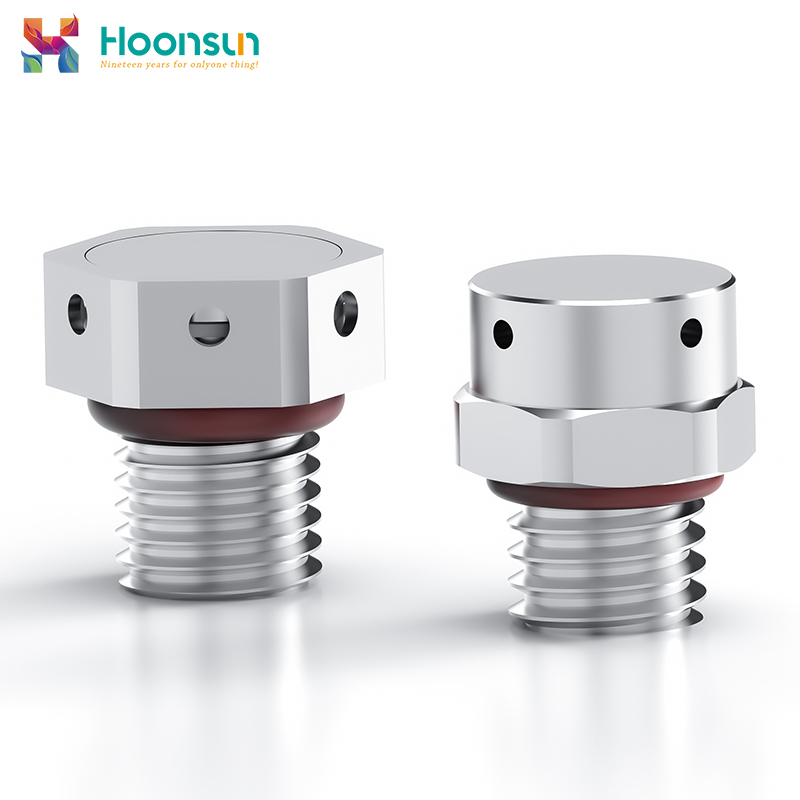

This stainless steel cable gland is designed to securely anchor and seal the end of an electrical cable entering an enclosure or piece of equipment. It provides robust mechanical strain relief, excellent corrosion resistance, and reliable ingress protection in harsh industrial, marine or offshore environments.
Materials:
Performance:
Protection:
Applications:
Key Benefits
High strength & corrosion resistance
IP68 waterproof & dustproof
Heat & cold resistant
Easy to install, maintenance-free
Global certification: CE, UL, RoHS
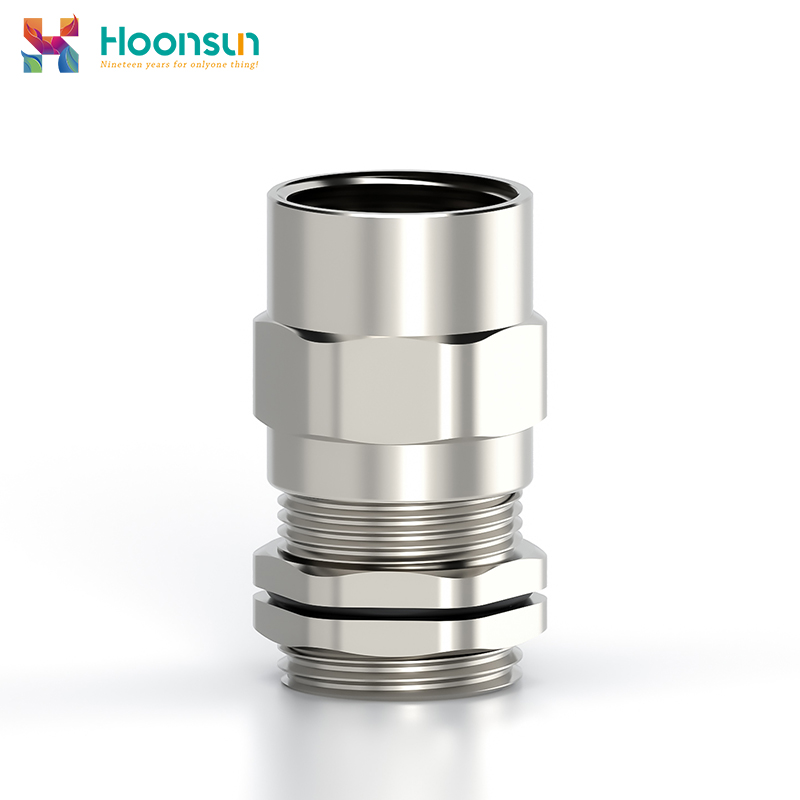
The Metal Tubular Cable Gland is a compact, miniature solution within our gland series, designed with a metric thread comparable to other thread types. It offers exceptional strain relief and an IP68 waterproof rating, tested up to 10 bar. Its space-saving design ensures seamless cable installation in tight or confined areas.
Using method: The Metal Tubular Cable Gland waterproof connector is designed to secure cables while providing reliable sealing. One end locks the cable firmly, while the other connects to an equipment box or an electrical device with an internal thread at the inlet or outlet. Thread type selection should match the application requirements.
Nickel-Plated Brass Body: Durable, corrosion-resistant construction for extended lifespan in humid environments.
Nylon Plastic (PA) Clamping Component: Ensures secure cable locking and insulation.
Thread Options: Short Thread Ideal for thin panels or internal-thread openings. Long Thread Perfect for thicker panels; custom extended thread lengths available on request.
Temperature Resistance: Operates efficiently in a static temperature range of -40°C to +100°C, suitable for harsh environments.
Sealing Versatility: Can accommodate cables with smaller outer diameters using a reducing seal insert.
The small-sized brass cable gland is a versatile solution suited for various industries and demanding environments:
This product is engineered to deliver top performance in environments that demand both durability and precision.
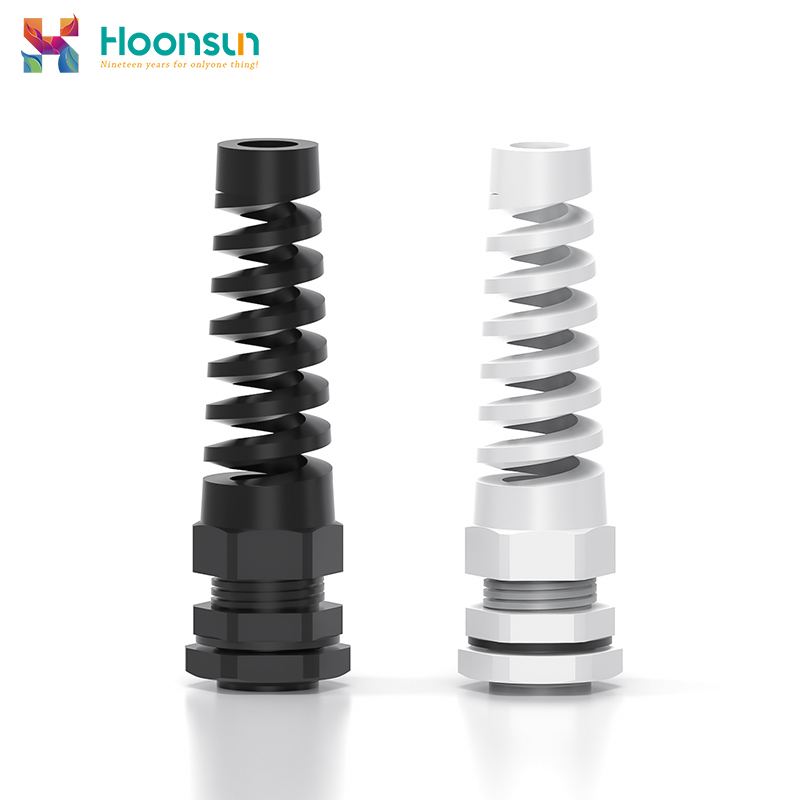
Focus Keywords: nylon cable gland advantages
Slug: nylon-cable-gland
Meta Description: Discover the main advantages of nylon cable glands for safe and reliable cable protection.
Alt text image: nylon cable gland for electrical wiring
Introduction
A nylon cable gland is a small but essential device used to fix and protect cables where they enter electrical panels or equipment. Made from durable nylon material, it provides excellent sealing, strain relief, and insulation—making it widely used in electrical, machinery, and communication systems.
Nylon cable glands are light but very strong. They resist pulling, twisting, and vibration, keeping cables stable and secure even in harsh conditions.
Unlike metal glands, nylon ones are non-conductive. This makes them safer for electrical systems, preventing electric shocks and short circuits.
Most nylon cable glands reach IP68 protection levels, offering great resistance to water, dust, and oil. They are ideal for outdoor or humid environments.
Nylon resists rust, acids, and most chemicals. This ensures long-lasting performance in factories, marine areas, and other tough environments.
Nylon cable glands are simple to install and remove without special tools. Their flexible design fits a wide range of cable sizes securely.
1,anti-bending function: Integrated anti-bending structure limits cable bending angle. Prevents core wire breakage and insulation damage caused by excessive bending at the joint, extending cable service life.
2,Nylon material advantages: Made of high-quality nylon, lightweight, cost-effective and corrosion-resistant. Not easy to age or deform, suitable for indoor and outdoor general environments, balancing practicality and cost performance.
3,Basic sealing protection: IP65 sealing performance, dustproof, waterproof and resistant to mild oil stains. Effectively isolates external impurities, ensures stable connection of cable joints, and meets the needs of general working conditions.
4,Convenient installation and adaptation: Compact structure, compatible with various cable specifications, no complex tools required. Can be quickly assembled and fixed by hand, with high installation efficiency, suitable for batch wiring scenarios.
They are more affordable than metal types, require little maintenance, and last for years—making them a smart, budget-friendly choice.
Conclusion
Nylon cable glands offer strong, lightweight, and safe cable protection. With waterproof, corrosion-resistant, and insulating features, they ensure reliable performance in both indoor and outdoor applications. Simple, durable, and economical—they’re the perfect choice for modern electrical systems.

The Nylon Powerful Corrugated Hose Fitting is crafted from premium PA66 (nylon) material, renowned for its exceptional durability, high tensile strength, and outstanding resistance to environmental stressors, including chemicals, heat, and moisture.
Available in customizable colors such as black, white, and grey, this fitting delivers both functional reliability and aesthetic flexibility
Key Features
Superior Material & Build: Constructed from PA66, this fitting ensures excellent mechanical performance even under rugged conditions.
Waterproof & Dustproof Integrity: Engineered to meet IP68-grade sealing standards, it provides complete protection against dust ingress and sustained water immersion
Temperature Resilience: Designed for use in severe environments, it withstands a wide thermal range—typically from -40 °C up to +100 °C or more
Robust Tensile & Compression Strength: Its corrugated design enhances both tensile strength and flexibility, maintaining performance under strain and external pressure
Universal Thread Compatibility: Supports standard M, PG, or G thread types, facilitating easy integration into existing conduit and enclosure systems
Versatile Application Scope: Ideal for cable sealing and reinforcement in applications such as monitoring systems, distribution boxes, LED street lighting, and outdoor electrical enclosures
Automation & Industrial Installations: Provides secure cable routing and sealing for robots, sensors, and control panels.
Marine & Harsh Environments: Perfect for seafaring and offshore applications requiring high-level dust and waterproofing.
Outdoor Infrastructure: Reliable in street lighting, surveillance systems, and outdoor signage exposed to weather extremes.
Renewable Energy & Transit Systems: Compatible with wind turbines, rail networks, and PV installations needing rugged electrical protection
The Nylon Powerful Corrugated Hose Fitting excels where conventional fittings fall short—delivering superior tensile and environmental resistance without sacrificing flexibility. Compared to traditional plastic or metal equivalents, it offers lightweight durability, halogen-free fire safety, and excellent UV and chemical resistance
1,Dedicated adaptation to corrugated pipes: Adopts a special locking structure for corrugated pipes, which can tightly fit the ends of corrugated pipes of different specifications. Prevents pipe detachment or displacement, adapts to the flexible wiring needs of corrugated pipes, and balances connection firmness with pipe flexibility.
2,Nylon material advantages: Made of high-quality nylon, lightweight, cost-effective and anti-aging. Has certain impact resistance, not easy to deform or crack, suitable for indoor and outdoor general industrial environments, with outstanding cost performance.
3,Reliable sealing protection: Built-in sealing ring design, achieving IP65 sealing performance. Effectively dustproof, waterproof and resistant to mild oil stains, isolating external impurities from entering the interior of corrugated pipes and protecting cables from damage.
4,Convenient and efficient installation: Streamlined structure, no complex tools required, allowing manual assembly and fixation with corrugated pipes and cables. Compatible with nylon corrugated pipes of various inner diameter specifications, with higher efficiency in batch wiring scenarios.
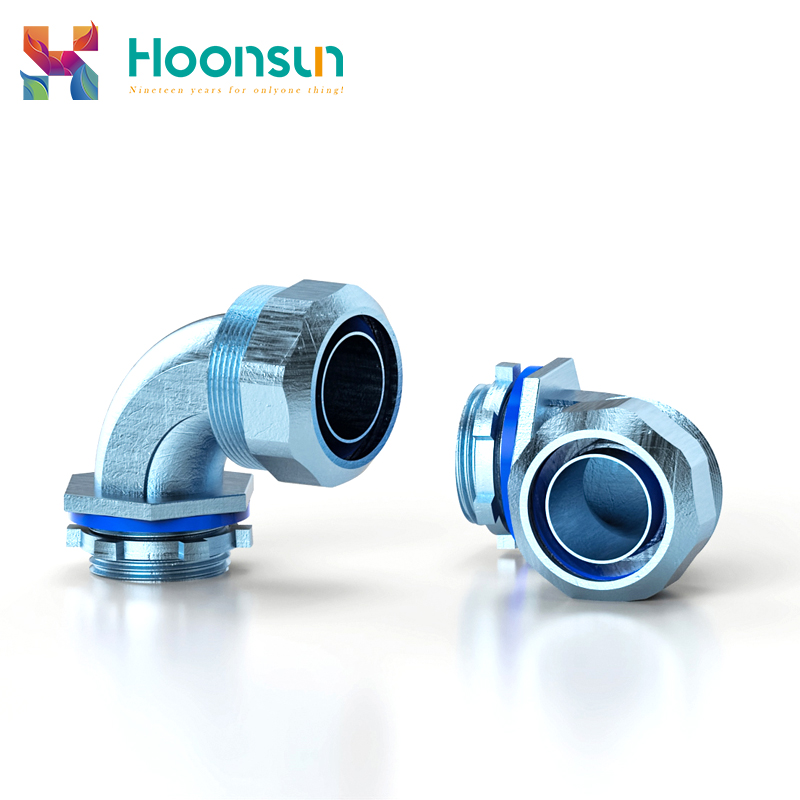
The Zinc Alloy Hose Joint is a precision-engineered flexible conduit connector crafted to the highest standards, blending exceptional durability with superior sealing performance. Constructed from premium zinc alloy, the joint boasts an elegant die-cast body that offers outstanding mechanical strength, corrosion resistance, and structural integrity—ideal for demanding industrial environments.
Certified for IP54 protection, this joint ensures absolute dust-tightness and long-lasting waterproof reliability, safeguarding cable connections against moisture, dust, and environmental contaminants. Its robust construction handles exposure to salt spray, oils, solvents, and harsh chemical agents with ease.
The joint features a sophisticated, compact hexagonal profile designed for efficient installation and secure hose-to-equipment mating. Standard options accommodate various thread types and diameters—including Flex-to-Box, 90° conduit connections, and metric/G-type interfaces—ensuring compatibility across diverse industrial platforms.
Thermally resilient, the joint withstands elevated temperatures (up to approximately 120 °C during short-term exposure), offering steadfast performance in demanding thermal scenarios
Beyond protection, it delivers excellent mechanical stability: manufactured to endure torsional forces and heavy usage, it secures hoses firmly to enclosures or boxes while maintaining pristine contact surfaces and preventing leakage or disconnections
In summary, the Zinc Alloy Hose Joint epitomises dependable, high-strength connectivity solutions, tailored for harsh industrial, marine, and automation settings.
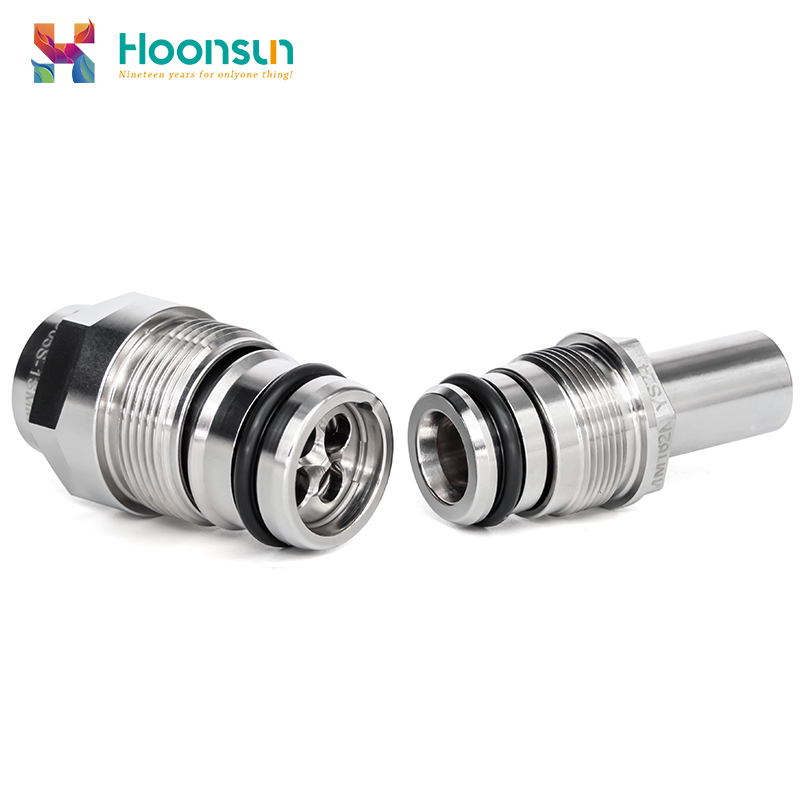
HOONSUN 液冷连接器经UL认证,是一款专为可靠液冷系统设计的高性能组件。该连接器采用耐高温、耐腐蚀材料制成,确保在高压和极端温度下稳定运行。
它提供安全防漏的连接,用于输送冷却液,防止过热并保护关键设备。BLC系列具有卓越的密封性能、耐压性和长期耐用性,是各种冷却应用的理想选择。
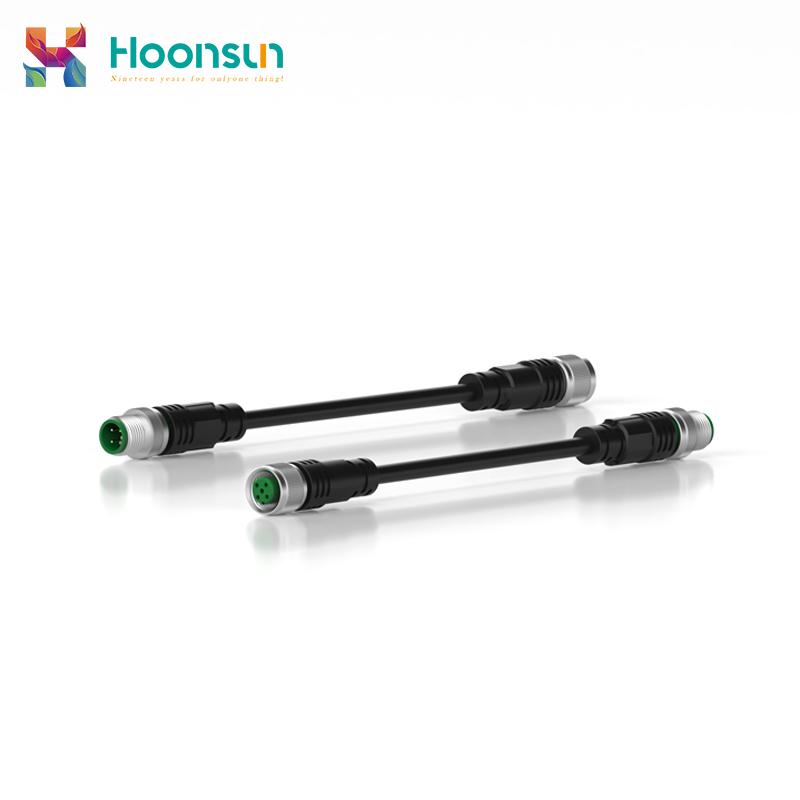
Our circular connectors are electrical connection components designed to meet high reliability and high performance requirements, and are widely used in electronics, industry, automobiles, aerospace, communications and other fields. With a rugged structure, precise electrical transmission and excellent protection performance, it ensures that the equipment always maintains a stable connection in extreme environments.
The circular connector adopts advanced contact technology, which can stably transmit high current and high-frequency signals, ensure the stable operation of the equipment, and avoid signal interference and electrical failure.
The optimized circular structure provides super strong tensile and compressive resistance, ensuring a firm connection even in high vibration, shock or heavy load environments.
With a high protection level (IP67/IP68), the circular connector can effectively prevent the ingress of external substances such as moisture and dust, and is suitable for harsh environments and outdoor applications, providing long-lasting reliability.
The internal shielding design effectively prevents electromagnetic interference, ensures stable signal transmission, and prevents the equipment from being affected by external electromagnetic noise.
Circular connectors are easy to plug and unplug, support quick connection and removal, reduce installation time and maintenance costs, and facilitate equipment updates and maintenance.
Selected high temperature and corrosion resistant materials ensure that the connector can maintain long-term stable electrical performance even in high temperature or humid environments.
Provide a variety of contact configurations and connection methods (welding, crimping, plug-in), which can be customized according to different needs to meet the special requirements of various applications.
Easy installation: The circular connector is designed for fast and easy installation and is suitable for a variety of installation environments. No complex tools are required, and the plug-in connection design greatly reduces installation time.
Strong durability: High-quality materials give the connector excellent wear and corrosion resistance, which can operate stably for a long time and reduce the cost of frequent replacement.
Easy maintenance: supports quick disconnection and replacement, simplifies equipment maintenance and upgrade process, and avoids excessive downtime.
High reliability: reliable electrical and mechanical connection, suitable for various harsh environments, ensuring long-term stable operation of equipment.
Flexible customization: the number of contacts, materials, sizes, etc. can be customised according to needs to meet diverse application scenarios.
Long-lasting durability: anti-vibration, anti-corrosion, and high temperature resistance, ensuring continuous operation under high load and harsh environments.
Convenient operation: quick connection and disassembly, saving time and effort, suitable for equipment with frequent maintenance and replacement.
Product packaging: Each circular connector undergoes strict quality inspection before leaving the factory to ensure that the product meets international standards.
The connector is protected in packaging to prevent damage during transportation.
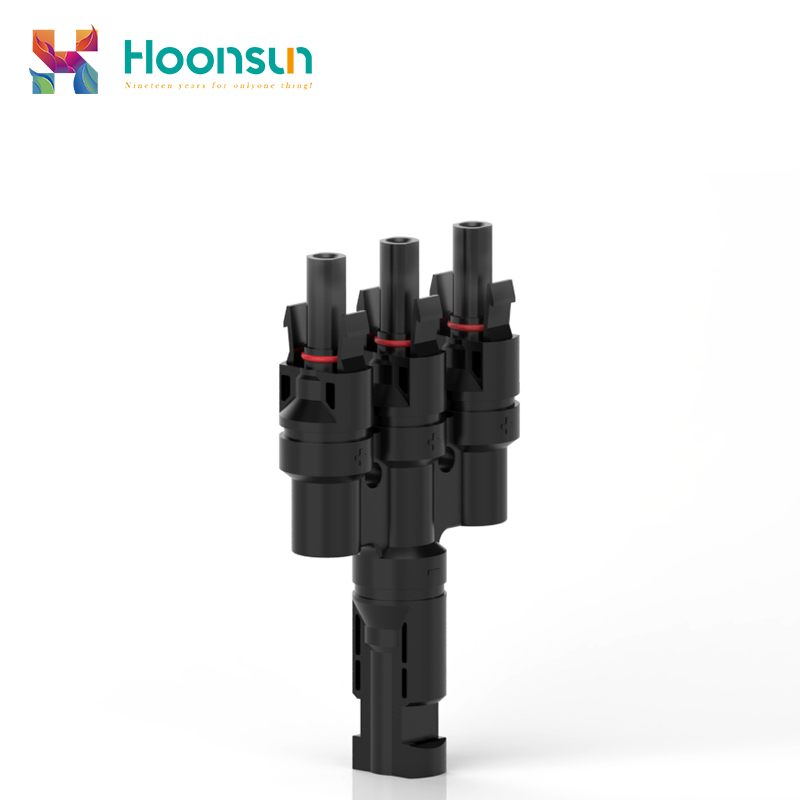
Photovoltaic connectors are electrical connectors specifically used to connect various components in solar power generation systems (such as solar panels, inverters, batteries, etc.). Their main function is to ensure the stability, safety and efficiency of power transmission in photovoltaic systems.
The primary function of photovoltaic connectors is to stably transmit the power generated by solar panels to inverters, batteries or other power system components. They are able to carry higher currents and voltages, and ensure efficient power transmission to avoid power loss.
The photovoltaic system requires stable current and voltage when working. Photovoltaic connectors ensure the safe operation of the system through mechanisms such as firm connection, arc prevention and short circuit prevention.
Many photovoltaic connectors are equipped with anti-reverse connection function to avoid damage caused by incorrect connection of the solar panel.
Waterproof and dustproof: Photovoltaic connectors are usually waterproof and dustproof, meet international standards IP67 or IP68, and can be used for a long time in harsh outdoor environments.
Photovoltaic panels usually operate at high voltages (such as above 60V), and photovoltaic connectors are designed to withstand such high voltages and larger currents in the system. Photovoltaic connectors need to maintain stable electrical contact under these conditions to prevent safety issues such as overheating, damage or fire.
Since photovoltaic systems are exposed to sunlight all year round, photovoltaic connectors must be **resistant to ultraviolet rays (UV)**. Materials usually use special plastics (such as PC/PA66) that can effectively resist ultraviolet radiation and prevent aging.
Photovoltaic connectors also need to be able to withstand high temperatures and maintain stability under extreme temperature conditions (from low to high temperature environments).
When connecting and disconnecting electrical equipment, arcs are easily generated, and photovoltaic connectors are usually designed with anti-arc functions. They can quickly cut off the current and avoid arc damage to the connector itself and other system components.
Photovoltaic connectors usually adopt a quick plug-in design to make installation and maintenance easier. Without additional tools, photovoltaic modules and other equipment can be quickly connected and disconnected, greatly improving the efficiency of installation and maintenance.
Photovoltaic systems are installed outdoors and exposed to humid or salt spray environments for a long time. Therefore, the exterior of photovoltaic connectors is usually made of corrosion-resistant materials, such as gold-plated or silver-plated contacts, or corrosion-resistant metal shells to ensure long-term stable operation.
When designing photovoltaic connectors, special attention is paid to low contact resistance to ensure smooth current flow, reduce heat generated by excessive resistance, avoid losses and improve system efficiency.
Photovoltaic connectors usually need to comply with international standards, such as IEC 62852 (international standards for the design and testing requirements of photovoltaic connectors). In addition, some certification standards, such as UL, TUV, etc., ensure the quality and safety of connectors, especially when used in different environments in different regions of the world, in accordance with the certification requirements of various countries.
The design of photovoltaic connectors usually takes into account the compatibility of photovoltaic panels, inverters, and battery energy storage devices of different models and brands to ensure that photovoltaic components and systems can be seamlessly connected.
1. MC4 connector (most common type of photovoltaic connector):
MC4 connector is the most common connector in photovoltaic system, with high current carrying capacity and waterproof design. It is usually used to connect the output end of solar panels and parallel or inverter.
Its features include: easy plug and unplug, automatic locking design, arc protection, long-term UV resistance, etc.
2. T4 connector:
T4 connector is more compact than MC4 and is often used in medium-sized photovoltaic systems. Its advantages are lower installation cost and suitable for photovoltaic wiring with smaller current and shorter distance.
3. Solar Y connector:
Solar connector (or parallel connector) is used to connect the positive and negative poles of multiple solar panels to ensure the effective convergence of electricity.
4. Quick connector:
Some modern photovoltaic connectors adopt quick plug and unplug design (that is, no tool required), providing a simpler installation and removal experience.connector types:
1. MC4 connector (most common type of photovoltaic connector):
MC4 connector is the most common connector in photovoltaic system, with high current carrying capacity and waterproof design. It is usually used to connect the output end of solar panels and parallel or inverter.
Its features include: easy plug and unplug, automatic locking design, arc protection, long-term UV resistance, etc.
2. T4 connector:
T4 connector is more compact than MC4 and is often used in medium-sized photovoltaic systems. Its advantages are lower installation cost and suitable for photovoltaic wiring with smaller current and shorter distance.
3. Solar connector:
Solar connector (or parallel connector) is used to connect the positive and negative poles of multiple solar panels to ensure the effective convergence of electricity.
4. Quick connector:
Some modern photovoltaic connectors adopt a quick plug and unplug design (that is, no tool required), providing a simpler installation and removal experience.
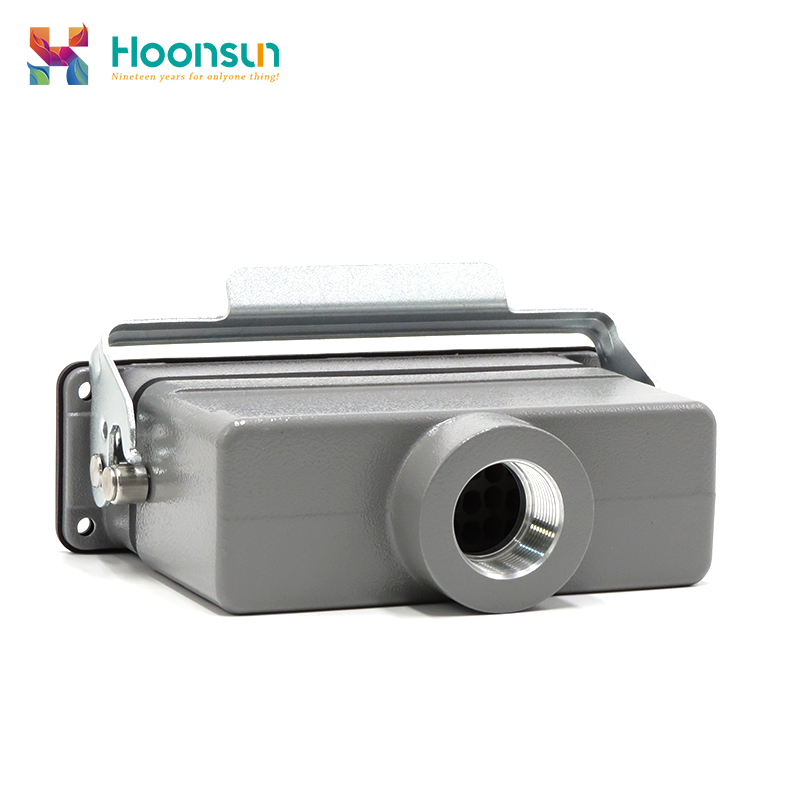
Heavy-duty Connector (HDC), also known as industrial connector, is a device that can provide high-reliability electrical connections for industrial applications.
Through modular design, it can integrate multiple functions such as power supply, signal, and data transmission into one, achieving convenient and stable connection between devices.
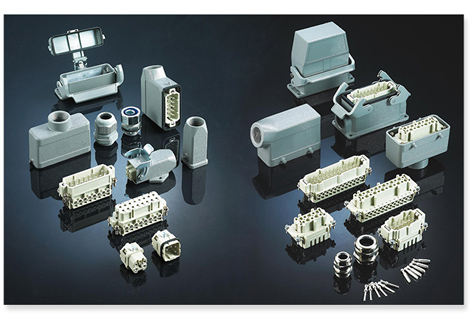

Realize electrical connection:In complex industrial environments, it transmits power and signals for electrical equipment, automation systems, etc., to ensure the normal operation of equipment. For example, connect the control cabinet and the robotic arm of an industrial robot to transmit power supply and control signals.
Facilitate equipment assembly and maintenance: The plug-in connection method is adopted. Compared with traditional hard wiring, the equipment can be quickly connected during assembly, and can be easily disconnected and reconnected during later maintenance and repair, shortening downtime and improving production efficiency.
High protection: With good sealing performance, it can reach IP68 or even higher protection level, effectively prevent dust, water, oil, etc., and adapt to harsh industrial environments.
High mechanical strength: The shell is mostly made of high-strength engineering plastics or metal materials, which can withstand strong impact and vibration, ensuring the stability and reliability of the connection.
Good electrical performance: The contact parts are made of high-quality conductive materials, with low resistance and high current carrying capacity, which can reduce power loss and stably transmit signals.


Industrial automation field: used to connect various equipment in automated production lines, such as PLC, sensors, actuators, etc., to ensure stable signal and power transmission during the production process.
Transportation industry: widely used in the connection between electric vehicle charging piles and vehicle charging interfaces, and the connection of internal electrical systems of rail transit vehicles.
Energy field: suitable for internal electrical connections of wind turbines, and the connection between photovoltaic panels and inverters in solar photovoltaic power stations.
Machinery manufacturing industry: connects the control systems and power systems of various machine tools, machining centers and other mechanical equipment to ensure reliable operation of the equipment.
Heavy-duty connectors are key components for electrical connections in the industrial field. They realize power and signal transmission and facilitate equipment assembly and maintenance. They feature high protection, high mechanical strength, modular design, and good electrical performance. They are used in many industries such as industrial automation, transportation, energy, and machinery manufacturing, providing reliable connection guarantees for stable operation of equipment in complex environments.